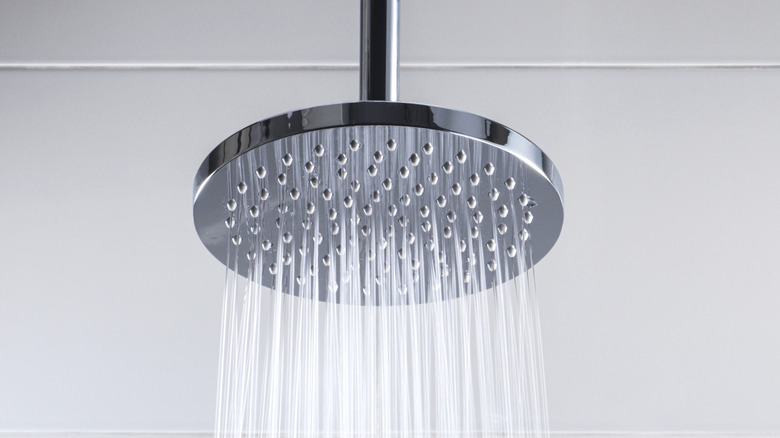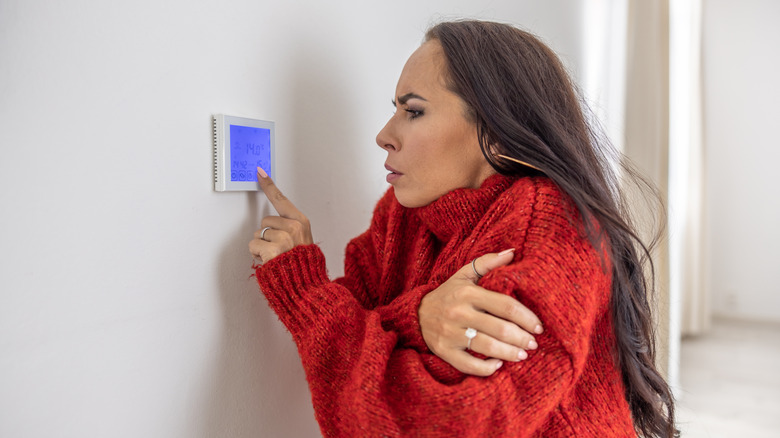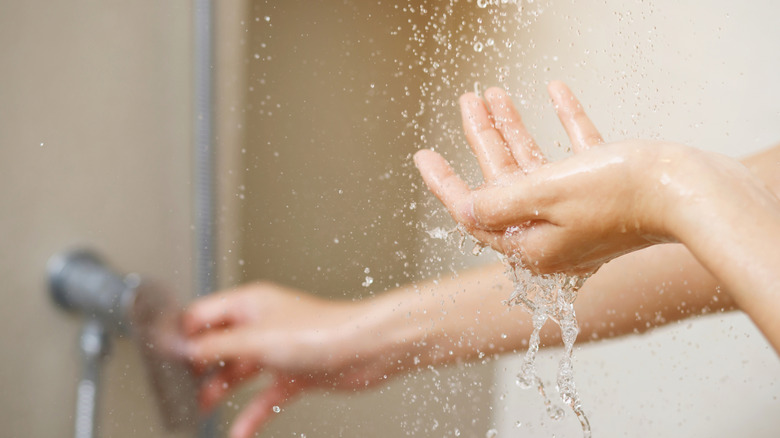The Sign In Your Bathroom That Makes It Clear It's Time To Turn On The Heat
Imagine being at the end of a long, chilly day, and all you want is to step into your bathroom and enjoy a warm comforting shower before bed. You turn on the tap expecting the water to heat up in seconds, but instead you're greeted with an icy shower that takes forever to warm up. You might start to be frustrated and wonder if something is wrong with your plumbing, and before you know it, you'll be mulling over the possibility of a costly repair.
Before you jump to call a professional, take a moment to consider that perhaps there is a simpler solution to your water heating problems. Assuming that your family hasn't recently used up a bunch of hot water and your water heater isn't just taking a long time to heat up, it shouldn't take longer than a minute or two for your shower to run piping hot. When that isn't the case, though, it often isn't a plumbing issue at all, it's your home's thermostat. Simply put, the issue can sometimes be addressed just by turning up the heat in your home. Ensuring your heating system is properly set could make all the difference in keeping your water heating fast and your shower or bath time comfortable.
Why turning on the heat might be the solution
Your bathroom water taking a long time to heat up is often a sign that your home's heating system isn't doing its job. If the indoor temperature is too low while it's freezing outside, it can affect the efficiency of your water heater. Your pipes and the water inside them are much colder to begin with, which means it takes longer for hot water to travel to your faucet. If there are areas in your home that are colder than others, and if these are adjacent or near your water pipes, then water from your heater might be cooling down as it enters those pipes.
You can try troubleshooting hot water issues in the shower by simply adjusting your thermostat to a higher setting, and making sure the vents are open in those cooler areas. Modern water heaters, regardless if they are tank-based or tankless, can have a tougher time keeping water hot when air temperature around the tank is excessively cool. Keeping your home temperature too low can actually put more strain on the heater to deliver hot water quickly.
This issue shouldn't be ignored, as it may lead to more headaches. The prolonged effort required to heat water can lead to higher energy consumption and in turn, higher utility bills. The added strain on your water heater, meanwhile, can also shorten its lifespan and eventually require you to install a new one.
How to turn the heat up without pumping up your utility bill
You may rightly be concerned that turning up the heat might inflate your monthly utility bill, but keeping your home's temperature comfortably warm and your shower heating up quickly doesn't have to drain your budget. Investing in a programmable or smart thermostat to optimize your home's heating schedule is a good move that can save you time and hassle as well as money.
You may also lower the heat during the hours you're away and raise it slightly when you're home. Aim to keep the thermostat at around 68 degrees Fahrenheit during the day, which is a sweet spot that balances comfort with energy efficiency. If they are not already, you may want to consider insulating your pipes, especially those near external walls or in unheated areas. This reduces heat loss and ensures that hot water reaches your bathroom faster. Don't forget to seal drafts around your home, since improving overall heating efficiency indirectly benefits your water heater as well.
By implementing these simple measures, you can maintain a warm and inviting bathroom without breaking the bank or compromising your heater's performance, and you'll never have to endure the cold-water blues again. Turn up the heat and enjoy a cozy and energy-efficient sanctuary!


